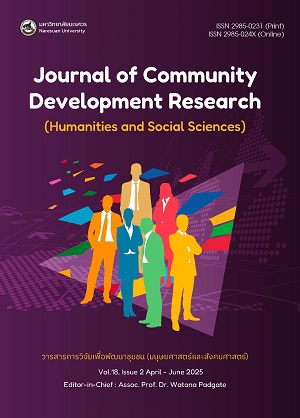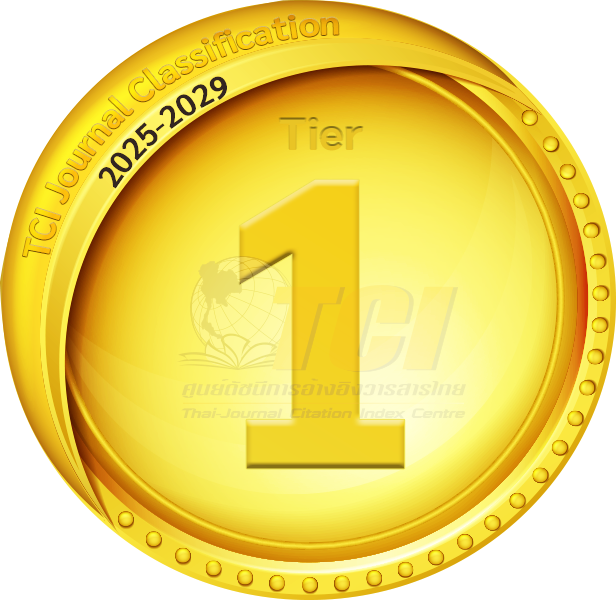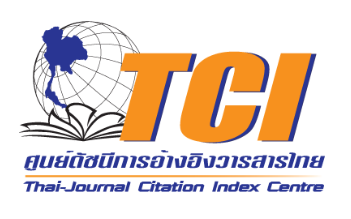Trends in Choosing EFL Research Topics: A Case Study of Thai Undergraduate Students
DOI:
https://doi.org/10.69650/jcdrhs.2025.905Keywords:
Trends, Literature, English as a Foreign Language (EFL), Thai Undergraduate Students, Thai ContextAbstract
The purpose of this study was to identify and describe emerging trends in EFL research topics chosen by Thai undergraduate students. The participants were 469 fourth-year English major students from the Faculty of Humanities and the Faculty of Education at Naresuan University during the academic years 2022 to 2024, with 156, 158, and 155 students, respectively. The data consisted of research studies conducted by these students as part of their final project for the Research Report Writing course offered during the academic years 2022-2024 (140 studies in total). These 140 research studies were categorized into two main types based on the type of research conducted: quantitative and qualitative research. As for quantitative research, six subcategories were identified: 1) language input (listening and reading), 2) language output (speaking and writing), 3) language form, 4) language proficiency, 5) affective needs, and 6) language strategies. Regarding qualitative research, only one subcategory (i.e., literature) was identified, as the students’ qualitative research focused solely on this area. The data were analyzed using percentages, and the research categories were ranked accordingly. It was found that the majority of the students chose quantitative research to conduct rather than qualitative research, and research on affective needs was the most chosen subtheme for their research project topics. It was followed by language strategies, language form, and language output, especially speaking, respectively. Results, discussion, limitations, and pedagogical implications of the study in response to the findings are also discussed.
References
Albiladi, W. (2019). Research in TESOL: An Investigation of Trends and Types of Research Over the Last Ten Years. Preprints.Org. https://doi.org/10.20944/preprints201911.0380.v1
Almuhaimeed, S. A. (2022). Research Trends in ESL/EFL: A Systematic Investigation of Studies in ELT Journal and TESOL Quarterly. Journal of Language and Linguistic Studies, 18(Special 2), 918-934. Retrieved from https://www.jlls.org/index.php/jlls/article/view/4010
Amaliawati, S., Aulia, N., & Susanti, A. (2024). A Systematic Investigation of Research Trends of ELT and EFL Found in JEES and JEFL Journals. Journal of English Teaching, Literature, and Applied Linguistics, 8(1), 1-11. http://doi.org/10.30587/jetlal.v8i1.6751
Amini Farsani, M., Jamali, H. R., Beikmohammadi, M., Ghorbani, B. D., & Soleimani, L. (2021). Methodological Orientations, Academic Citations, and Scientific Collaboration in Applied Linguistics: What do Research Synthesis and Bibliometrics Indicate? System, 100, 102547. https://doi.org/10.1016/j.system.2021.102547
Bailey, A., & Corrales, K. A. (2020). Insight into Novice Research: A Critical Review of ELT Master’s Theses. MEXTESOL Journal, 44(4), 1–11. Retrieved from https://www.mextesol.net/journal/index.php?page=journal&id_article=22025
Benson, P. (2001). Teaching and Researching Autonomy in Language Learning. Harlow: Longman.
Boonchom, W., Piyanukool, S., & Prachanant, N. (2024). Trends of Using Artificial Intelligence (AI) Technologies in Research Studies of English Language Teaching. BRU ELT Journal, 2(1), 34–50. https://doi.org/10.14456/bej.2024.3
Brown, H. D. (2007). Principles of Language Learning and Teaching (5th ed.). New York: Longman.
Fadhila, A., & Gustira, I. (2021). Trend on TEFL Research: A Study in English Education Department of IAIN Bukittinggi in the Period of 2015 to 2017. In Advances in Social Science, Education and Humanities Research, Volume 579, Proceedings of the Eighth International Conference on English Language and Teaching (ICOELT-8 2020) (pp. 264-270). The Netherlands: Atlantis Press. https://doi.org/10.2991/assehr.k.210914.050
Gao, Y., & Bartlett, B. (2014). Opportunities and Challenges for Negotiating Appropriate EAP Practices in China. In I. Liyanage, & T. Walker (Eds.), English for Academic Purposes (EAP) in Asia: Negotiating Appropriate Practices in a Global Context (pp. 13-31). Rotterdam: Sense Publishers. https://doi.org/10.1007/978-94-6209-752-0_2
Ghofur, A. (2023). Trends in EFL Undergraduate Thesis Topics in Higher Education (A Case Study at UIN Walisongo Semarang) (Bechelor’s Thesis). Universitas Islam Negeri Walisongo Semarang, Indonesia.
Huang, X., Zou, D., Cheng, G., Chen, X., & Xie, H. (2023). Trends, Research Issues and Applications of Artificial Intelligence in Language Education. Educational Technology & Society, 26(1), 112-131. https://doi.org/10.30191/ETS.202301_26(1).0009
Hyland, K., & Hamp-Lyons, L. (2002). EAP: Issues and Directions. Journal of English for Academic Purposes, 1(1), 1-12. https://doi.org/10.1016/S1475-1585(02)00002-4
Liu, L. (2015). A Study of Graduate Thesis Writing Course for English Undergraduates. Journal of Language Teaching & Research, 6(4), 836–841. https://doi.org/10.17507/jltr.0604.17
Mohsen, M. A. (2021). A Bibliometric Study of the Applied Linguistics Research Output of Saudi Institutions in the Web of Science for the Decade 2011–2020. The Electronic Library, 39(6), 865–884. http://doi.org/10.1108/EL-06-2021-0121
Nunan, D. (2012). Research Methods in Language Learning (21st ed.). Cambridge: Cambridge University Press.
Özmen, K. S., Cephe, P. T., & Kınık, B. (2016). Trends in Doctoral Research on English Language Teaching in Turkey. Educational Sciences: Theory & Practice, 16(5), 1737–1759. Retrieved from https://jestp.com/article-detail/?id=537
Phoocharoensil, S. (2022). ELT and AL Research Trends in Thai SCOPUS-indexed Journals. PASAA Journal, 64(1), 163-193. https://doi.org/10.58837/CHULA.PASAA.64.1.8
Ramadhana, M. A., & Fatima. (2021). Exploring Trends in EFL Students Thesesfrom 2014 to 2018. Jurnal Onoma: Pendidikan, Bahasa dan Sastra, 7(1), 118-124. https://doi.org/10.30605/onoma.v7i1.605
Downloads
Published
How to Cite
Issue
Section
License
Copyright (c) 2025 Journal of Community Development Research (Humanities and Social Sciences)

This work is licensed under a Creative Commons Attribution 4.0 International License.









